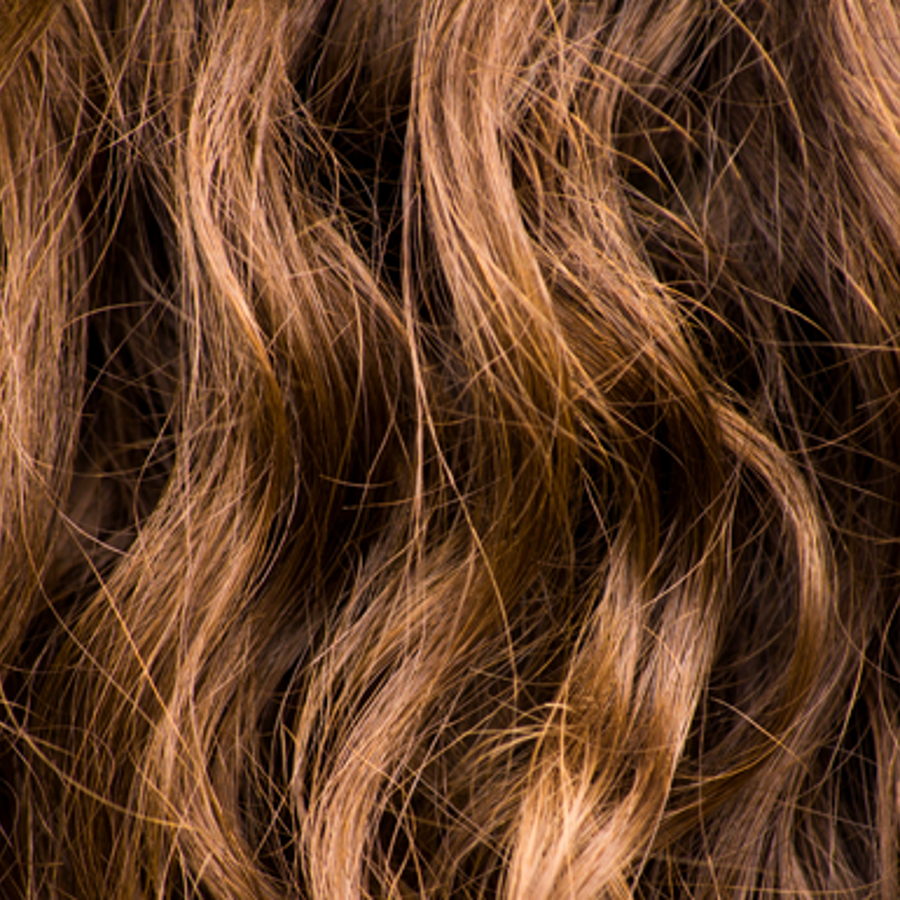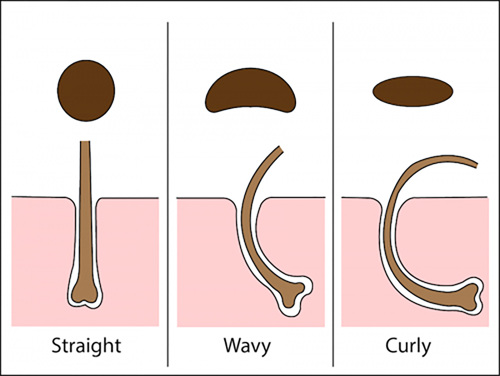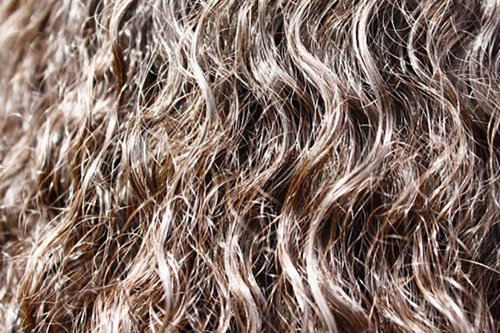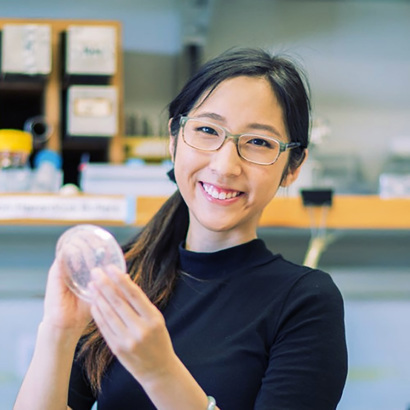
Why does hair sometimes become curlier or straighter as people get older?
May 22, 2018

- Related Topics:
- Complex traits,
- Environmental influence,
- Hair texture,
- Gene expression,
- Epigenetics
A middle school student from New Zealand asks:
“I’m 13 and have brown, straight, slightly textured hair. My mum has black straight hair while my dad had black very curly hair. Could my hair become curlier as I grow up or will it remain straight?”
It’s possible that your hair could change as you get older. But it also might not! Let’s look first at why you have wavy hair, and what causes different hair textures.
The texture of our hair is mainly determined by our DNA. And a child can have a different hair texture than their parents! Unlike with some traits, you can get a hair texture that is a little bit of both parents. This means that if someone with curly hair and someone with straight hair have a child, this child could have wavy hair.
But what causes curly or wavy hair in the first place? When hair grows, it comes out of tiny holes (or “pores”) in our skin. These pores are called hair follicles. The texture of a person’s hair is determined by the shape of their hair follicles.
Your follicle shape is partly determined by what genes you have. Your DNA might cause you to have perfectly round follicles. In this case you would have straight hair. Or your DNA might cause you to have oval-shaped follicles, leading to curly hair. Or you might have a little bit of round follicle DNA and a little bit of oval follicle DNA. In this case, your follicles would be a little bit in the middle! You would have wavy hair.

Genes can turn on and off
While we know genes influence hair texture, scientists still don’t know all of the genes that contribute to hair texture or what exactly those genes do.
But we do know a little bit about how these genes can get turned on or off. While a person might have cells with the instruction manuals or “genes” for curly hair, those instruction manuals might not always be in use. If a cell is not using an instruction manual, we call the gene “turned off.” The genes for making hair curly might turn on or off over the course of a person’s lifetime.
Genes can turn on and off for lots of different reasons. These factors are not even completely understood by scientists! But we do know that hormones can turn genes on and off.
Several hormones have been implicated causing changes in hair texture. Hormones are chemical signals that the body uses to send messages between body parts. Your hormone levels can change a lot during your life.
Hormones can turn genes on and off over the course of a person’s lifetime.
Your hormones change a lot when you’re still growing, especially once you hit puberty. But it can also change when you’re an adult! Changes in age, nutrition, temperature, sun exposure and various other factors can cause our bodies to change the amounts or types of hormones we make.
Some women report that their hair became thicker and glossier during pregnancy. This might be a result of increased levels of estrogen and progesterone in the body.
Why does hair become curlier in humid climates?
You may have noticed that hair tends to curl or wave when it’s humid outside. This has less to do with genetics and more to do with the physical properties of hair.
Humid air has a lot of water molecules floating around in it. Each water molecule has a slightly positively charged side and a slightly negatively charged side. Water molecules are just like tiny magnets! The proteins in your hair are the same way. So when you walk into a humid room, it’s like you’re surrounding your hair with tiny magnets pulling your hair in different directions. This can make your hair curly or wavy that day.


Author: Trisha Chong
When this answer was published in 2018, Trisha was a Ph.D. candidate in the Department of Developmental Biology, studying spatiotemporal protein localization in bacteria in Lucy Shapiro's laboratory. She wrote this answer while participating in the Stanford at The Tech program.
 Skip Navigation
Skip Navigation
